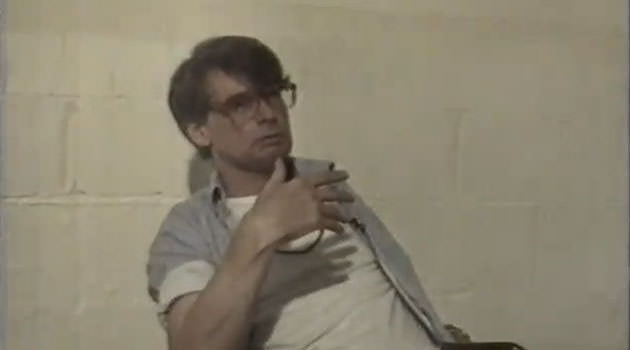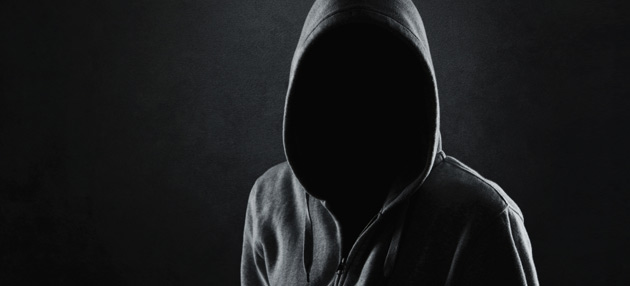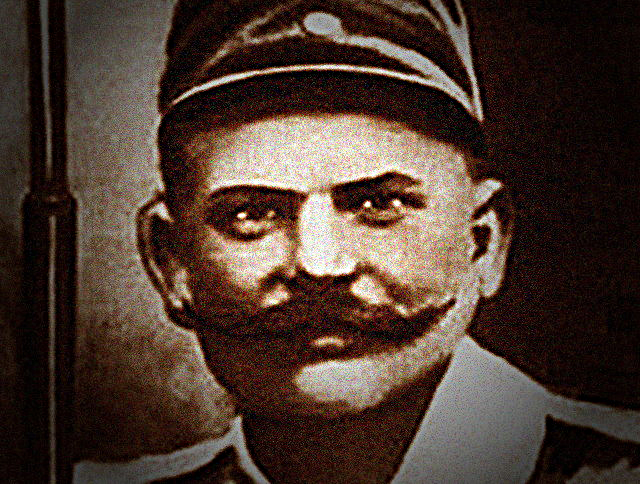The FBI was in and the Task Force was also at work, but whoever was killing did not pay much heed to either of the two, and the killings continued. The very first week of the New Year saw the disappearance of Lubie Geter (14), who went missing on January 3, 1981, and his body was found on February 5, 1981. His friend, Terry Pue (15), had disappeared on January 22, 1981, and his body was found on January 23, 1981. A white anonymous caller had told the authorities as to where they could find Pue’s body. The same caller is believed to have called the police on January 8, 1981, and had told that they could find a body on the same road. However, the police could not find any body there then. Years after the human skeletal remains were found at the location indicated by the caller, but the remains were never identified. It was suggested that the remains could be of Darron Glass, who went missing and was never found. However, whether or not the remains were Darron’s could not be ascertained.
Patrick Baltazar (11) disappeared on February 6, 1981, and was found dead in an office park by a cleaner. He had been strangulated. The same month on February 19, 1981 Curtis Walker (13) disappeared and his body was found on March 6, 1981 in the South River, and the cause of death was, again, asphyxia. And the same day (March 6, 1981), the FBI also found the remains of Jefferey Mathis, who had been missing for almost a year.
Joseph (Jo-Jo) Bell (15) went missing on March 2, 1981, and his body was recovered on April 19, 1981 in the South River. He, too, had died of asphyxiation. His friend Timothy Hill (13) disappeared some eleven days later on March 13, 1981. His dead body was recovered from the Chattahoochee River on March 30, 1981. Hill was the last child victim to be added to the list of the victims in the Atlanta Murders. Notably, the victims were now older than before and the rivers were the favoured dumping ground.
The residents of Techwood Homes, a housing project, decided to take protection in their own hands and formed a group called ‘bat patrol’ with people from the locality armed with baseball bats patrolling the locality to prevent disappearances. And on March 20, 1981, the very first day of the ‘bat patrol’, one Eddie (Bubba) Duncan (21) disappeared from the very same housing project. The killer wasn’t scared of the baseball bats for sure. Duncan’s dead body was recovered from the Chattahoochee River on April 8, 1981. He was the first adult victim to make to the list of the Atlanta victims.
The List prepared by the Task Force had excluded the older, black victims of murder because they were considered “too old” to be on the List. So, it is possible that some of the older victims who died before Duncan deserved to be on the List.
Lots of money raised by rich corporations and public figures such as Muhammad Ali was offered as reward to anybody who could assist the authorities to find the rampaging killer. President Reagan issued over two million dollars to the city of Atlanta and the Task Force so as to make it better equipped to investigate the killings and bring the killer or killers to justice. But nothing seemed to work.
Then in April 1981 Larry Rogers (20) went missing and was found dead in a river, like others, and was apparently strangulated, much the same way as other victims. Next to disappear was Michael McIntosh (23), an ex-convict. He disappeared on March 25, 1981 only to be found dead in the Chattahoochee River in April 1981. McIntosh knew Jo-Jo Bell and was also seen on several occasions at Tom Terrell’s house, a place that was frequented by both Bell and Timothy Hill.
Another ex-convict, John Porter (28), was found dead in April 1981. His body bore six stab wounds and he was left on a sidewalk in a vacant lot. He was suffering from some grave mental problems and had spent considerable time in a mental institution. However, Porter was not part of the List prepared by the Task Force until the accused was put on trial. It was through fiber matches that Porter was found connected to the accused. This remained one of the hazy areas of the case.
Like McIntosh and Porter, Jimmy Ray Payne (21) had also done time in prison. He had been convicted and sentenced for burglary. Payne disappeared on April 22, 1981, and his body was recovered from the Chattahoochee River a week later. It is believed that he was killed soon after his disappearance and his body had been under water almost for the entire duration between his disappearance and the recovery of his body.
William Barrett (17) vanished in May 1981, and his body was found next day near his house. He had been strangulated to death and then stabbed. Nathaniel Cater (27) was another ex-convict who made it to the List. When exactly did Carter disappear remains unknown, but his body was recovered from the Chattahoochee River on May 24, 1981.
Since Chattahoochee River had been spewing out dead bodies day and night, policemen were staked out to keep a watch on suspicious activity in the hope that the killer might be spotted near the river, and they might be able to apprehend him. In the early hours of May 22, 1981, a sudden splash alerted Officer Bob Campbell and Officer Freddie Jacobs. Officer Jacobs was on the southern part of the bridge while Officer Campbell was beneath the bridge at the northerly Cobb County side.
Jacobs and Campbell testified that they had spotted the car and heard the splash apparently caused by the falling of a considerably heavy object in the river, which is when Campbell’s radioed FBI Agent Greg Gilliland, who, in turn, had the car pull over some half a mile from the bridge. It was a station wagon driven by one Wayne Williams (23). Williams – a freelance photographer and music promoter – told that he was crossing the bridge to find the house of a potential singer named Cheryl Johnson with whom he had an appointment hours later that day. But the phone number he provided was incorrect and so was the address. It was hard to believe that Williams was to meet someone he did not have the address or the phone number of.
However, the detectives dragged the Chattahoochee River hours later around the bridge, but no body was recovered. Williams was a suspect, but they had nothing to tie him to. Then, on May 24, 1981, the nude body of Nathaniel Cater was recovered from the Chattahoochee River. Cater had disappeared a few days before, and the cause of death was once again “probable asphyxia”. When had Cater died exactly could not be medically determined. But the medical examiner did provide this much to the police that Cater could have been dead long enough for Williams to have killed and dumped his body into the river. The police had a case against Williams now.
However, four witnesses would later come forward to tell the investigators that they had seen Cater alive after the night Williams was apprehended on the bridge and questioned, which meant that the police’s theory that Williams had killed Cater and threw his body into the river was doubtful. But this vital information was never shared with the defence lawyers who represented Williams at the trial.
There were lots of fibers found on the bodies of the victims and some of the victims also had dog hair on their bodies. The FBI laboratories reported matches between the fibers collected from the bodies of the victims to the fiber samples taken from Williams’ house for testing. There were similarities between the dog hair collected from the bodies and those from Williams’ own dog. What was making things worse for Williams was that whatever he told to the investigators turned out to be false from the number and address of the woman he said he had an appointment down to his exact whereabouts and all that he did the day before he was found on the bridge after the ‘splash’. Two polygraph tests that Williams was subjected to indicated that he was being evasive and was not responding truthfully. The odds were thus adding up against Williams.
The law in the State of Georgia allows the prosecution to bring in before the court and the jury such evidence from other cases that proves a “pattern”. Williams was prosecuted only for the murder of two adults, Jimmy Payne and Nathaniel Cater, but
the evidence from other murders were also brought in as part of the “pattern”. Since Williams lived in the same locality as most of the victims, he had been seen with some of the victims, which further strengthened the prosecution’s case.
The case against Williams was fundamentally founded upon the fiber and dog hair evidence, and neither were conclusive. Fibers are not exactly unique like fingerprints, and Dr. Elizabeth Wictum, Director of the UC Davis laboratory that carried out the dog hair testing, reportedly told The Associated Press that despite being “fairly significant”, the results did not “conclusively point to Williams’ dog as the source of the hair”, because the lab tested only for mitochondrial DNA which, unlike nuclear DNA, is not unique to one dog.
Williams was prosecuted. The trial began on January 6, 1982, with Judge Clarence Cooper presiding, and the primary evidence against Williams was the fiber analysis. Twelve “pattern” murders were brought in for support, and on February 27, 1982 the jury, after eleven hours of deliberation, found Williams guilty of the murders of Jimmy Ray Payne and Nathaniel Cater. Two consecutive life sentences were awarded to Williams. However, his guilt was never really ‘beyond reasonable doubt’.
Originally written for and published in LAWYERS UPDATE as a two-part ‘Crime File’ in January 2013.
Photo Courtesy: Murderpedia








